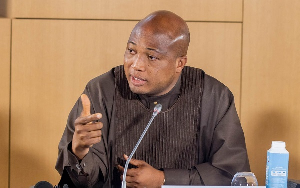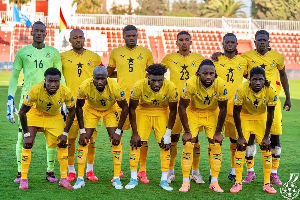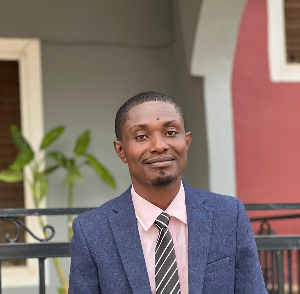Lansing - The sound of pounding drums filled the air as an audience of more than 100 sat transfixed, watching African dancers dressed in brightly colored cloth moving. A couple of men and women, clothed in vivid orange, crimson and dark green patterned outfits and brightly colored beads floated through the gymnasium doors, assembled themselves in front of the crowd.
The began an array of lively circular swaying movements along with the rhythm of the drum.
"I like the drums the most," 9-year-old Anthony Campbell said. "I like to see them dance, but the drums are more fun."
He was one of the hundreds of preschool through eighth grade students at Sankofa Shule Academy, 4817 Bristol St., treated to an hour-long display of traditional African dances by members of the Adinkra Music & Dance Company on Wednesday.
The performance, "Adinkra Fuses African Heritage with Contemporary Styles," mixed rhythmic drumming and songs with expressive dances that have been popular in the West African country for centuries.
Adinkra is a cloth used by the Asante tribe of Ghana, which is also known for crafting ivory and gold.
The dance company was brought to the Lansing area as part of a Black History Month celebration through the sponsorship of Sankofa Shule and El-Hajj Malik El-Shabazz academies.
Both academies, which each have less than 200 students, are charter schools committed to teaching African studies through their curriculum, said Maxine Hankins-Cain, superintendent of the schools.
She said it was a privilege to be able to present a spirited depiction and celebration of African heritage to her students during Black History Month.
"These are authentic dancers from the motherland," Hankins-Cain said. "Through them, the children can see the beauty of African art."
The dance company explained the significance of the dances and the different instruments used, such as the timpani drum, during ancient times.
"Some could be used to signal tribes in other villages," said Kweku Kwakye, a drummer with the group.
"They were used to communicate and help."
Dancers later changed into grass skirts and roamed the audience to find eager participants.
"This is great," said Evelyn Campbell, a Lansing resident and teacher at Sankofa. "Some of us will never get a chance to go to Africa - this makes the kids feel like they're part of their culture."
Yesutor Kotoka, 27, a member of the dance company and a Ghana native, said she enjoys traveling and performing throughout the United States each year.
"I've been dancing for 15 years," she said. "I love it."
Kotoka said it is important for her to perform traditional dances from her native country.
"People don't know about Ghana," she said, proudly modeling a traditional maroon and ivy-colored cloth dress which has a name translating to "up and down" in English.
"I love everything about my culture, and I want to portray it to the world."
Entertainment of Thursday, 13 February 2003
Source: .












